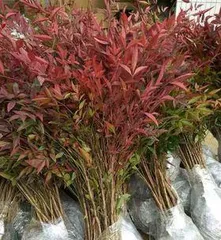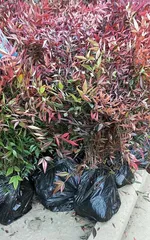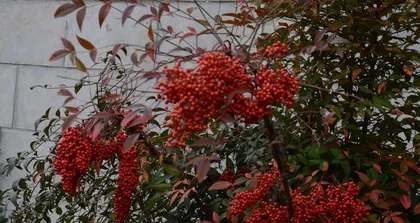Nandina is a common ornamental plant, known for its elegant, narrow leaves and graceful form, making it a favorite among many gardening enthusiasts. However, during the cultivation of Nandina, transplantation is sometimes necessary, especially in winter, when more precautions are needed. This article will introduce the precautions and methods for transplanting Nandina in winter.

Choose the right time
The best times to transplant Nandina are in spring and autumn, but it is also possible to do it in winter. However, it is crucial to choose a time with abundant sunlight, suitable temperatures, and appropriate soil moisture.
Prepare the transplanting tools
Transplanting Nandina requires tools such as scissors, sickles, and shovels, and the transplanting site should be cleared to ensure a smooth process.

Dig up the entire Nandina plant
Before transplanting Nandina, the entire plant needs to be dug up, ensuring the root system is intact to avoid unnecessary damage to the plant.
Handle the Nandina roots
When transplanting Nandina, its roots need to be properly handled by removing excess roots and cleaning off the soil.
Place in new soil
Place the prepared Nandina roots into new soil, and fertilize and water as needed to ensure the plant grows well in its new environment.

Secure the Nandina
After transplanting Nandina to a new environment, it needs to be secured to prevent it from falling over or shifting due to wind and rain.
Maintain appropriate light and humidity
After transplanting Nandina, its light and humidity conditions need to be adjusted promptly to ensure its normal growth.
Avoid over-fertilizing
After transplanting Nandina, there are sufficient nutrients in the new soil for it to absorb, so there is no need to over-fertilize, which could harm the plant.
Regular pruning
After transplanting Nandina, it is necessary to regularly prune the plant's branches and leaves to promote healthy growth and an attractive shape.
Pay attention to cold protection
When transplanting Nandina in winter, it is important to take cold protection measures to prevent the plant from frost damage.
Appropriately increase watering
When transplanting Nandina in winter, due to lower temperatures, soil moisture changes more slowly. It is necessary to increase the amount of watering appropriately, but avoid overwatering.
Pay attention to pest and disease control
After transplanting Nandina, it is necessary to strengthen the prevention and control of pests and diseases to avoid harm to the plant.
Regular fertilization
After transplanting Nandina, it needs to be fertilized regularly to supply the nutrients required for its normal growth.
Monitor the plant's health
After transplanting Nandina, it is necessary to observe the plant's health status, promptly address any issues found, and ensure the plant's normal growth and development.
Although transplanting Nandina in winter is relatively complex, as long as the correct transplanting methods and precautions are mastered, it is possible to successfully transplant the Nandina to a new growing environment and allow it to thrive.